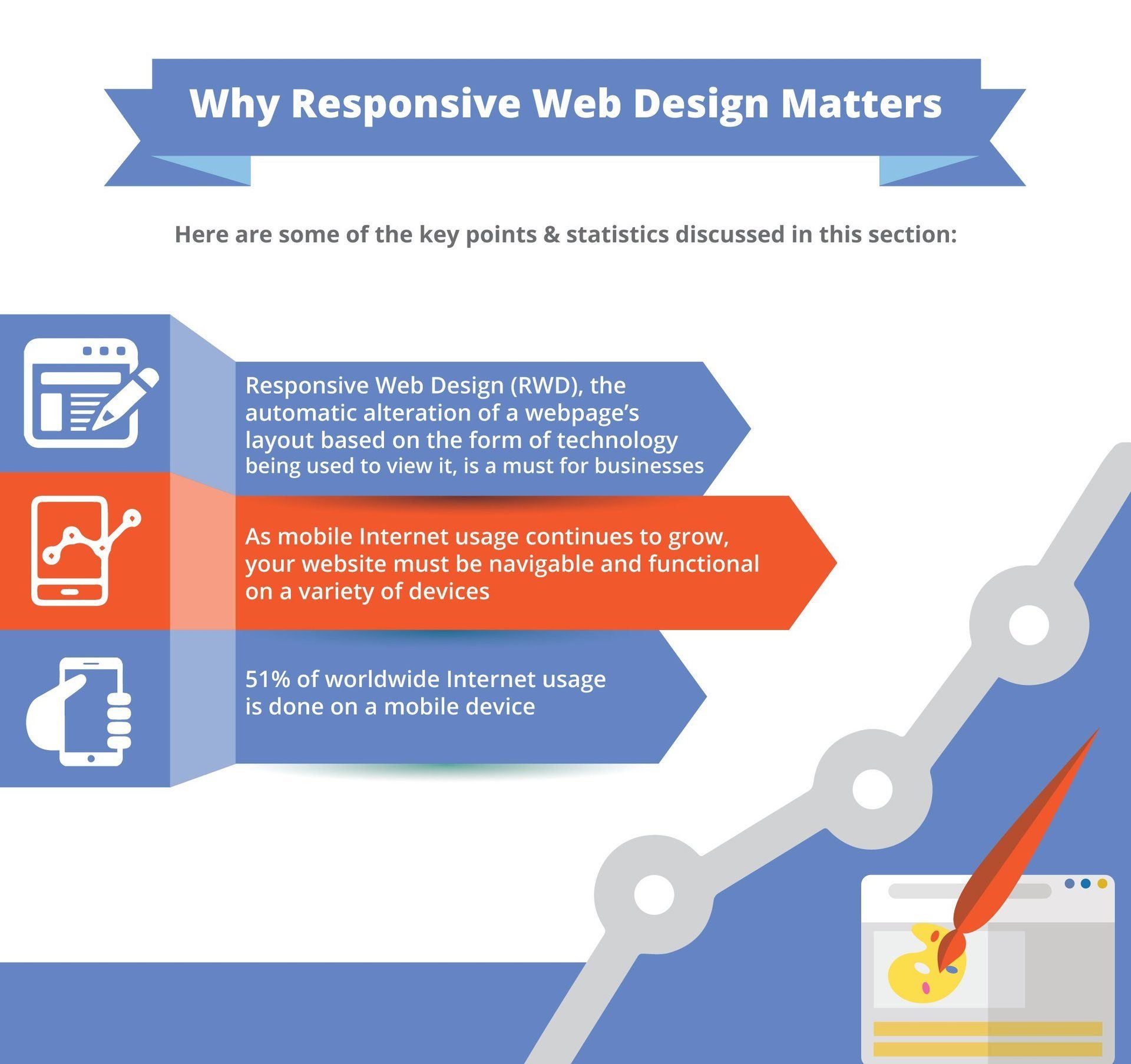How Your Website’s Responsiveness Can Affect Business
Is Your Website Helping or Hurting Your Business? Pt. 4
One of the quickest ways you can drive people off of your site is by having an unresponsive website. You might be wondering what makes a website responsive or unresponsive, and what you can do to change that. This all starts with the most important part of your website: your web design.
There are so many elements that factor into website design, and if you don’t utilize your site’s design, your online presence has the ability to hurt your business.
Responsive web design (RWD), is the automatic alteration of a webpage’s layout based on the form of technology being used to view it
. RWDtakes the content of your website and changes it to fit the screen its being viewed on, whether that’s a large desktop screen or a much smaller smartphone screen.
That might sound a bit confusing for someone who isn’t extremely knowledgeable in web design and coding, but before you skip over this section, let us make it a little more applicable to small businesses.
Format Changes
When you look at a website on your cell phone, you probably notice that it looks different than when you view it on a tablet or desktop computer. The content doesn’t change, but the format you see it in is slightly different. This is an example of responsive website design. RWD makes it possible for various devices to alter features like font size, image viewing and content scaling, as well as a search engine’s capability of recognizing your site.
This responsiveness is crucial to the success of your website. More and more people are using mobile devices over desktop computers to browse the Internet. In fact,
over 50 percent of
worldwide Internet usage
is done on a mobile device , meaning more people are searching on their phones and tablets than on a desktop computer.
Navigability
With that in mind, you can see why it’s important to make sure your website responds when users try to access it on their phones. But a responsive website is about more than just the layout changing from device to device; it’s also about site structure and making sure users can easily find what they are looking for when the format of your site changes on the device they are using.
Easy Scheduling
For service-based companies, RWD can be particularly useful in allowing visitors to schedule an appointment with you online. Researchhas shown that more people are using mobile devices to fill out a form, rather than make a call for an appointment . Therefore, the online scheduling portion of your website must be shown in a way that is compatible with mobile devices for it to work properly and attract leads.
Kitchen remodeling company Cabinets Plussaw an increase in appointments just from adding an online scheduling feature to its website. Dave Kunzweiler, a designer at Cabinets Plus, said that the appointment scheduling function didn’t just get people filling out a form; it got clients to come into the showroom.
“Before we added the online scheduling feature, we got little to no response in filling out the form on our site. After installing the online scheduling feature, we received seven online appointments, all of whom showed up on time and ended up being good leads.”
More and more people are using their smart phones and tablets to book appointments online, rather than from a desktop computer. So, when people come across a website that is difficult to navigate and read, they are likely to leave that website and choose one that is more accessible, which just might be your local competitor.
The Bottom Line: There are a few factors that play into responsive web design, including mobile optimization, site structure and layout. If you have a website that incorporates responsive design, you’ll see a huge difference in the amount of people staying on your website and the leads you get. But if your website doesn’t allow for compatibility across all devices, you end up missing out on potential leads.
This article is just one part of a larger series, “Is Your Website Helping or Hurting Your Business?” To read the article in its entirety and learn more about leveraging your website, click here .
Get the Latest Content in Your Inbox
Want to be the first to know about new content? Sign up to get our weekly blog posts sent to your email!








